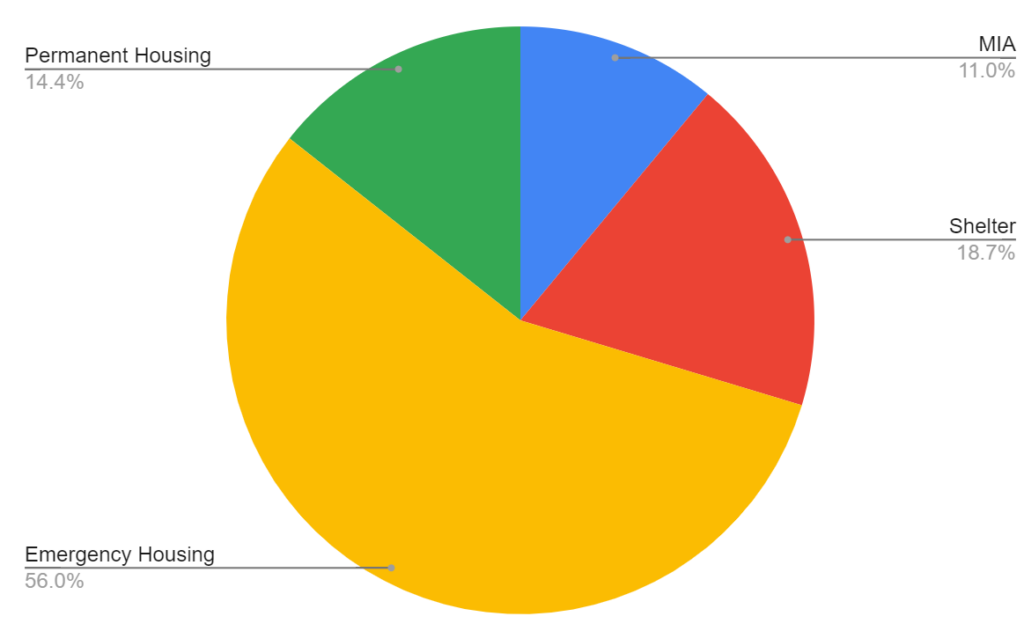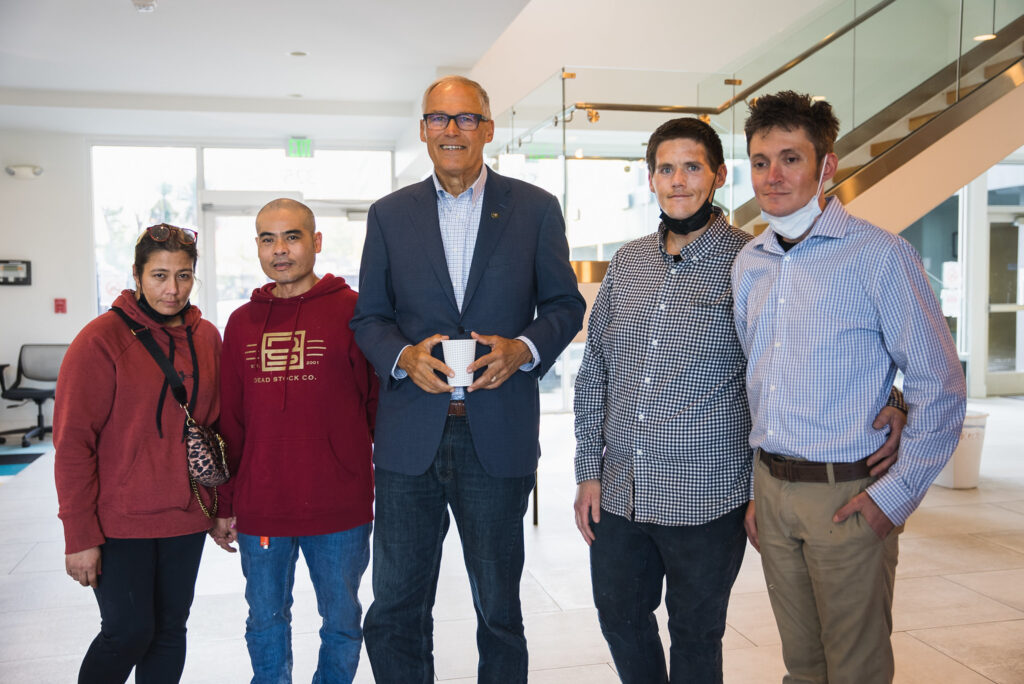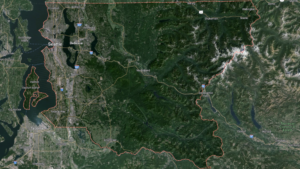Safe shelter is a basic human need, and no one should have to live outside.
Thanks to a state and local partnership in King County, 292 people here have moved out of homeless encampments and into safe lodging—meeting the basic need of housing first, so that people have the stability to heal, recover, reengage in jobs and community, and rebuild their lives.
Three of these sites were recently resolved in quick succession, including large and longstanding encampments in the Chinatown International District and in the South Park Neighborhood near the 1st Ave Bridge, as well as a site in the University District.
Other resolved sites in Seattle include I-5 and 520, Olive Way, Northgate, Eastlake, and Dearborn.
Resources Make the Difference
It’s no secret that most emergency shelters in King County are at full capacity, the supply of affordable housing is insufficient to meet demand, and many service providers are struggling to recruit and retain staff for the difficult work of helping people with complex needs.
The addition of state funding for outreach, staffing, shelter and housing through the state Right of Way Safety Initiative is what made these site resolutions possible. With state support, KCRHA was able to contract for additional outreach through PDA and REACH, and open 144 rooms of emergency housing with attached services, and is set up to open another 98 rooms soon. These emergency housing units are non-congregate, low-barrier, not time limited, and fully staffed by trained service providers.
In addition to the state-supported non-congregate emergency housing spaces, some people from encampments accepted placements in existing shelters or Permanent Supportive Housing as it became available, in hotels with supportive services provided, and in incentivized private market apartments.
How does it work?
Each step in site resolution is time-intensive, labor-intensive, and necessary to succeed in moving every resident to a safer location. Steps include:
- Outreach and engagement with people living unsheltered, often with daily presence by front-line outreach workers. Outreach is designed to build trust, connect people to health care and other services, meet basic needs like food and clothing, and ensure appropriate matching to housing and shelter.
- Building the “By Name List” to ensure that we understand the needs of our unhoused neighbors so that we can match them with services and place them in housing and shelter as soon as it becomes available.
- Site stabilization, which includes working with the City of Seattle for trash pickup and hygiene stations, and working with WSDOT on structural changes like fencing and lighting. We also work with the Seattle Police Department, Seattle Fire Department and Washington State Patrol as needed to respond to public safety issues.
- Matching people with permanent housing or temporary shelter as those resources become available.
- Reclamation and restoration of the property by WSDOT.
Identification Documents Opens Doors
Proof of identification is a common barrier to accessing services and housing. In the Chinatown International District, state and local partners worked together to overcome this barrier through a Services & Benefits Fair that allowed people living unsheltered immediate access to proof of identification, and connected people to food, economic, and medical assistance. (Learn more.)
By The Numbers
In King County, a total of 292 people, out of 327 on the By Name Lists, have moved inside through this state and local partnership. Over half of these people are now in Emergency Housing, meaning they have a low-barrier, not-time-limited, room with a door that locks. Others have moved to traditional shelters or to permanent housing, including incentivized apartments. Just 11% are “missing in action,” meaning that they have either turned down available shelter options or outreach teams have not been able to track them down.

| Site Location | Placements | Shelter or Hotel | Emergency Housing | Permanent Housing |
| South Park (2nd & Michigan SW) | 30 / 33 | 10 | 20 | – |
| Pasadena (NE 45th St. / Ship Canal) | 14 / 14 | 5 | 9 | – |
| Chinatown International District (8th & King) | 146 / 167 | 45 | 63 | 38 |
| Northgate | 24 / 28 | – | 21 | 3 |
| Dearborn | 57 / 64 | 1 | 50 | 5 |
| Eastlake at Republican | 6 / 6 | – | 6 | – |
| Olive Way | 10 / 10 | – | 10 | – |
| 520 | 5 / 5 | – | 4 | 1 |
Collective Action
The challenges and impacts of homelessness affect all of our communities, and it is only though partnership, collaboration and collective action that we can begin to meet the need.
This work is only possible because of the partnership between KCRHA, Gov. Inslee, the state Legislature, the state departments of Commerce and Transportation (WSDOT), the Washington State Patrol, the City of Seattle and the Seattle Police and Fire Departments, King County, our outreach partners at PDA and REACH, the private landlords who have stepped up to help out, and service providers like the Urban League who staff and manage shelters and housing to meet people’s needs.


